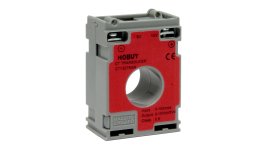geniusintraining
Lifetime Supporting Member + Moderator
Would it not be easier to install an auxiliary contact on the breaker and if its tripped send the signal to the PLC?
I dont see a difference from installing an aux or power detection device... and I would push back on the manufacture for not having one anyway, this should be standard to any cabinet
I don't want to invalidate any warranty or something like that,
I dont see a difference from installing an aux or power detection device... and I would push back on the manufacture for not having one anyway, this should be standard to any cabinet







